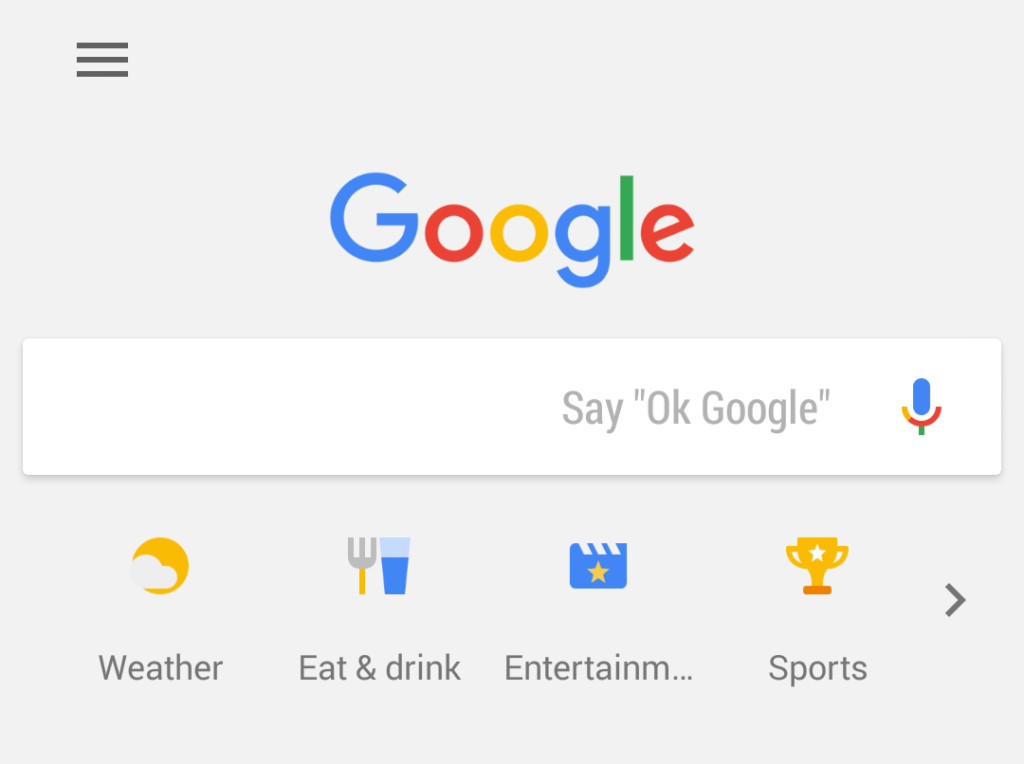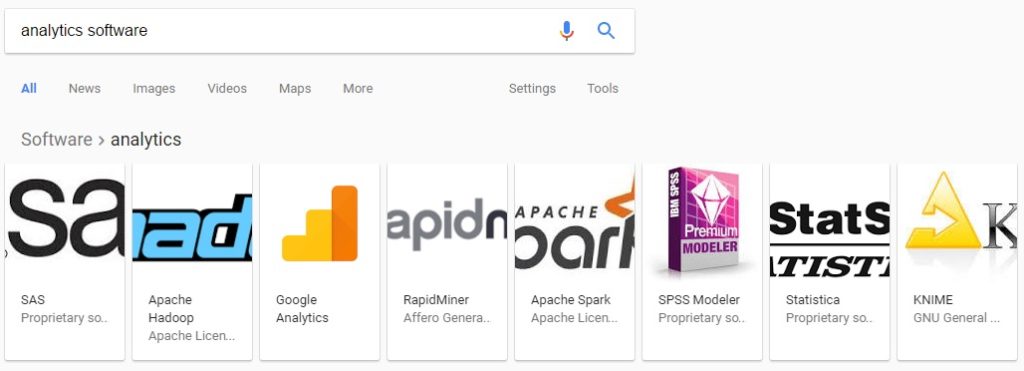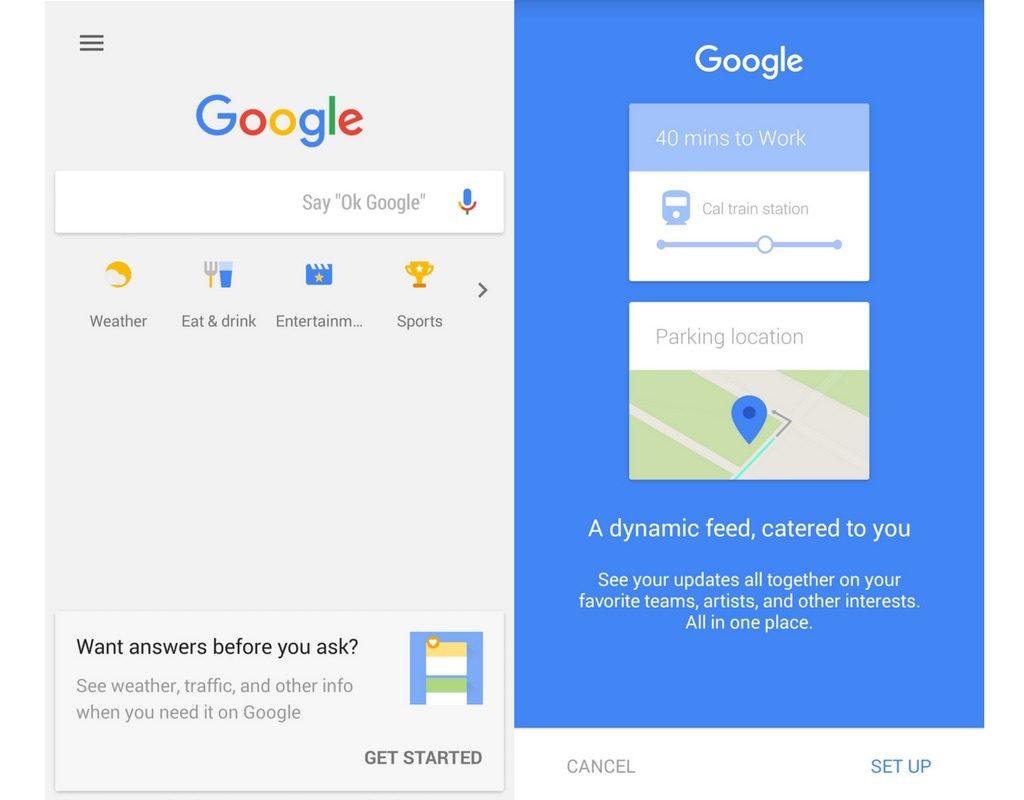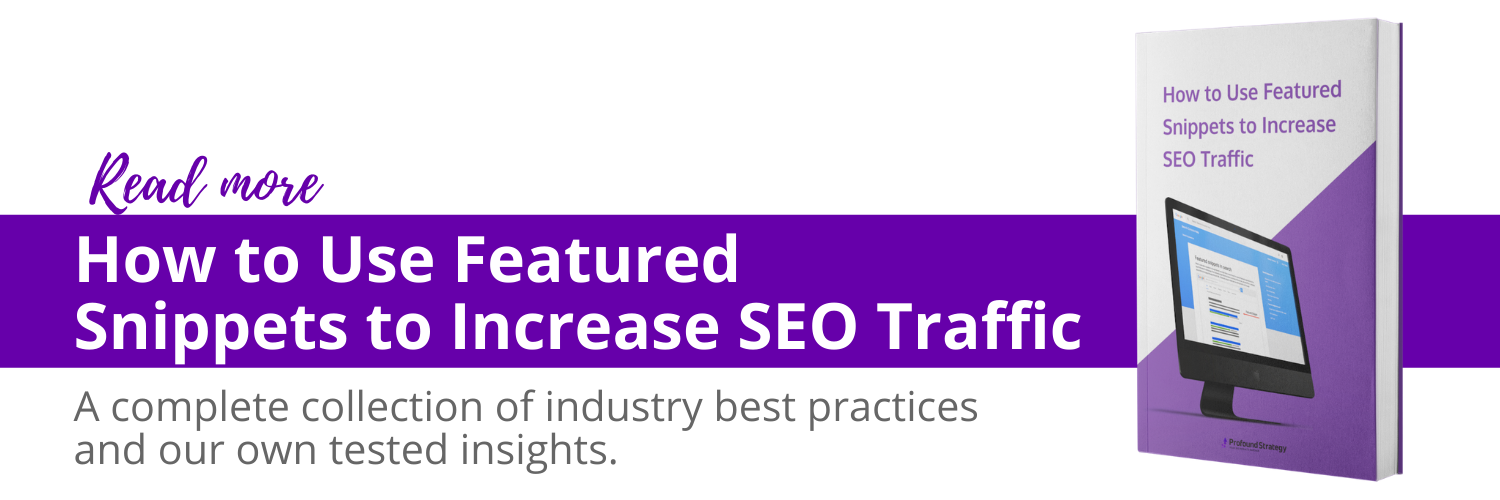What Google’s New Mobile Shortcuts Means for the Future of B2B SEO, and What Marketers Should Do About It
Last week, Google announced a new feature for mobile search: tappable shortcuts. Tabbable shortcuts appear below the search bar on mobile—in both the the Google app and on Google.com—and allow users to tap shortcuts to search popular topics like weather, news, and local businesses.

Click “Weather,” and it takes you directly to Google’s mobile weather page. “Eat & Drink” takes you to Google Maps listings. “Entertainment” and “Sports” populate a long list of news stories, but only from publishers using AMP.
This newest update is yet another in a long list of recent examples of Google invading B2C verticals by keeping consumers on Google-owned web properties instead of sending that traffic to the best organic results.
While B2B has been left relatively unscathed so far, it’s obvious from the search giant’s recent changes that—going forward—it intends to direct as much traffic as possible to its own content. B2B impacts are appearing at a slower pace, but they’re inevitable.
The Changing SERP Landscape and Implications for B2B SEO
Google has a vested interest in keeping users on their own pages, which is why SERPs are becoming more crowded—and more comprehensive. In addition to traditional organic results, queries could return AMP carousels, related questions, featured snippets, image packs, tweets—more than a dozen blended results. The number of potential blended results that can display keeps growing, and B2B queries are not exempt.
So far this year, Google has added search carousels above results for a number of B2B queries, expanded the Google Posts feature that provides certain businesses with their own individual carousels, and added related picks under AMP carousels on mobile.
What all of this means for B2B SEO is that the landscape is shifting. Organic content is coming more competitive—as of last year, 88% of B2Bs were using content marketing. But brands are no longer competing with nine other results on page one—they’re competing with nine other results … and Google.
Google’s recent changes signal several impacts for the B2B SEO industry:
- Brand recognition is becoming more important for SEO.
- Keyword and user intent research must expand to include results research.
- Brands that ignore Google’s suggestions will languish.
But it’s not all doom and gloom. There are several ways to combat these issues and continue to thrive.
1. Build Brand Recognition
Last month, Google rolled out a huge expansion to their carousels SERP feature that proved B2B brands are not exempt from interference. Google isn’t stealing traffic with carousels, but they are lining up competitors and using brands to get their own clicks. (Clicking on a carousel result doesn’t take the user to the brand site; it conducts a new Google search for the brand name—increasing the number of Google searches performed and displaying a new set of paid ad spots.)
A search for “analytics software,” for example, generates a brand carousel.

But, judging by the organic results that display below the carousel, users are probably seeking third-party comparisons of different analytics tools. That means the carousel isn’t satisfying user intent, so most will probably scroll past it … unless they recognize one of the brands displayed.
Redeeming Google carousels may only be done by improving brand awareness through other channels, and by featuring a logo that displays properly in the carousel box. Unfortunately, it’s not absolutely clear yet where Google is pulling the logos from. It appears to be using the first result from image search that it identifies as having the characteristics of a logo, but defining that image for Google carousels is not yet a definite process.
Learn more: Google Carousel Expansion Explained: Examples for B2B →
2. Expand Keyword Research Tasks
There are a few steps to conducting keyword research:
- Compile a list of relevant keywords.
- Evaluate relevancy and competition.
- Determine the user intent.
In the past, providing content that satisfied user intent for relevant keywords—and choosing keywords with little competition—may have been enough to earn the top spot for organic results. However, the top organic search result is not necessarily the first thing users see anymore. The top result may be preceded by a featured snippet, AMP carousel, or search carousel, and these blended results all need to be considered as part of research activities.
For example, if a featured snippet appears for a keyword, content should be optimized to appear in position zero. If a search carousel appears, that should be considered when evaluating the competition for the keyword—little is known at this point about how to earn placement in carousel results. It may be wiser, in those cases, to optimize content and pages for alternative keywords that don’t populate search carousels.
3. When Google Talks UX, Listen
When Google announced AMP back in 2015, they said,
We want webpages with rich content like video, animations, and graphics to work alongside smart ads, and to load instantaneously.
Today, AMP publishers dominate result pages for news queries, and AMP results are the only results appearing in the new tappable shortcuts feature.
When Google announced that HTTPS was added to its algorithm as a ranking factor, they said,
For now it’s only a very lightweight signal—affecting fewer than 1% of global queries, and carrying less weight than other signals such as high-quality content.
Then, in September of last year, Google announced that it will eventually preface all HTTP-only site URLs with a red “Not Secure” warning.
Adopting AMP and transitioning to HTTPS are massive, costly, time-consuming changes—and easy to ignore for those reasons. But ignore at your own risk, and prepare for the inevitable consequences.
That doesn’t, of course, mean that marketers should jump at Google’s every command. Google has been known to make recommendations based on their own preferences, not necessarily what works for SEO. They have also (recently) make threats about penalties that have come to nothing—at least, not yet.
Knowing which recommendations to follow and which warnings to heed can be tricky, and no one gets it right every time, but, in general, focus on what Google is focused on: providing a great user experience. When Google moves to improve user experience, move with them. When they make threats to scare marketers out of creating spammy links or release features that just build authors’ personal brands, take those with a grain of salt.
Weigh any hesitations against the potential loss of revenue if organic traffic suffers in the future as a result of Google moving forward with its preferences.
An Invasion of B2B Verticals is Inevitable
Google’s new tappable shortcuts feature is primarily invading B2C verticals right now, but the feature is customizable. When viewing the feature for the first time in Google’s app, users are asked to customize the experience:

It’s possible, then, that users could customize their work phones to show information that’s related to running a business, discovering new technologies, or keeping up with industry news.
Like AMP and HTTPS, these new features may be low impact at the moment, but they have big implications. By taking time now to consider how Google’s new features and changes may impact your brand’s digital properties down the line, you’ll be better prepared to avoid traffic loss when these features expand into new, more relevant B2B verticals.
What's Next?
Profound Strategy is on a mission to help growth-minded marketers turn SEO back into a source of predictable, reliable, scalable business results.
Start winning in organic search and turn SEO into your most efficient marketing channel. Subscribe to updates and join the 6,000+ marketing executives and founders that are changing the way they do SEO:
And dig deeper with some of our best content, such as The CMO’s Guide to Modern SEO, Technical SEO: A Decision Maker’s Guide, and A Modern Framework for SEO Work that Matters.





